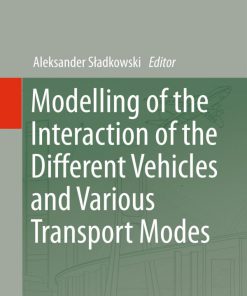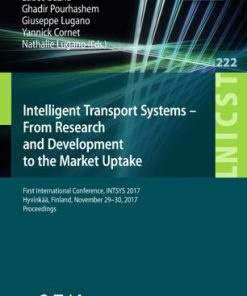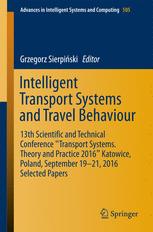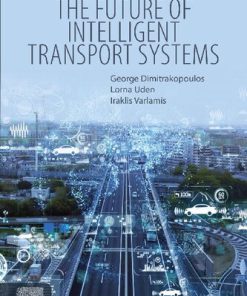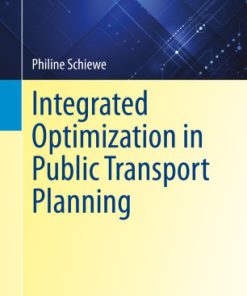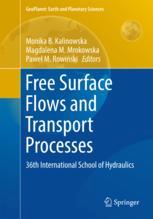Modelling Public Transport Passenger Flows in the Era of Intelligent Transport Systems COST Action TU1004 TransITS 1st Edition by Guido Gentile ISBN 9783319250823 3319250825
$50.00 Original price was: $50.00.$25.00Current price is: $25.00.
Modelling Public Transport Passenger Flows in the Era of Intelligent Transport Systems COST Action TU1004 TransITS 1st Edition by Guido Gentile – Ebook PDF Instant Download/Delivery: 9783319250823 ,3319250825
Full download Modelling Public Transport Passenger Flows in the Era of Intelligent Transport Systems COST Action TU1004 TransITS 1st Edition after payment
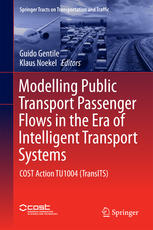
Product details:
ISBN 10: 3319250825
ISBN 13: 9783319250823
Author: Guido Gentile
Modelling Public Transport Passenger Flows in the Era of Intelligent Transport Systems COST Action TU1004 TransITS 1st Edition Table of contents:
Part I Public Transport in the Era of ITS – Francesco Viti
1 Public Transport in the Era of ITS: The Role of Public Transport in Sustainable Cities and Regions
1.1 Accessibility and Social Exclusion
1.2 City Structure and Its Growth
1.2.1 Urban Sprawl and Socio-economic Transformations
1.2.2 Consequences of Expansion for the Transport System
1.3 Energy Consumption and Efficiency
1.3.1 Beyond Movement
1.3.2 Primary Energy and Fossil Fuel
1.4 Externalities
1.4.1 Greenhouse Gas Emissions
1.4.2 Other Pollutant Emissions
1.4.3 Noise
1.4.4 Congestion
1.4.5 Consumption of Public Space
1.4.6 Safety and Security
1.5 Unit Mobility Costs
1.6 Mobility and Public Transport in European Metropolitan Areas
1.6.1 The EMTA Association
1.6.2 Some Mobility Indicators in Metropolitans Areas
1.6.3 Public Transport Subsidies
1.7 The Future of Transport and Mobility in Europe: Smart Cities and Communities
1.8 Reference Notes and Concluding Remarks
References
2 Public Transport in the Era of ITS: Forms of Public Transport
2.1 Organisation and Products
2.1.1 Regulation Versus Deregulation
2.1.1.1 Deregulation in UK
2.1.1.2 Deregulation in Sweden
2.1.2 Integration Issues
2.1.2.1 The Asymmetric Demand Aspect
2.1.2.2 Competition Among Lines on a Network
2.1.3 Public Transport Products
2.1.3.1 Local and Regional
2.1.3.2 Interregional
2.1.4 Multimodal Transport
2.1.4.1 Competition Between Modes
2.1.4.2 Intermodality
2.2 Vehicles
2.2.1 Trains
2.2.1.1 High-Speed Rail
2.2.1.2 Local Rail Systems
2.2.2 Buses and Coaches
2.2.3 Aircrafts
2.3 Infrastructures and Networks
2.3.1 Right of Way
2.3.1.1 Target Lanes
2.3.1.2 Bus Streets and Busways
2.3.1.3 Prioritisation at Traffic Signals
2.3.2 Nodes
2.3.2.1 Bus/Tram Stops
2.3.2.2 Stations and Terminals
2.3.2.3 Multimodal Hubs and Travel Centres
2.3.2.4 Park and Ride Facilities
2.3.3 Topological Structures
2.3.3.1 Regional and Urban Structures
2.3.3.2 Network Structures
2.4 Service Performances
2.4.1 Service and Stop Capacity
2.4.2 Systems Speed—Boarding, Alighting and Travel Times
2.4.3 Reliability, Punctuality, Regularity and Robustness
2.5 Conventional and Unconventional Services
2.5.1 Complementary Services
2.5.1.1 Feeder Lines
2.5.1.2 Shuttle Services
2.5.1.3 Differentiated Route Networks
2.5.2 High-Level Bus and Rail-Like Systems
2.5.2.1 Buses with a High Level of Service (BHLS)
2.5.2.2 Bus Rapid Transit (BRT)
2.5.3 Demand-Responsive Services
2.5.3.1 Dial-a-Ride
2.5.3.2 Bus-on-Demand
2.5.4 Paratransit
2.5.4.1 Vanpools
2.5.4.2 Car Sharing
2.5.4.3 Taxi Services
2.5.4.4 Jitneys
2.5.4.5 Paratransit in Developing Countries
2.5.4.6 Corporate Transport Services
2.5.4.7 Special Transportation Service (STS) for Elderly or Handicapped
2.6 Automation and New Transport Systems
2.6.1 Advanced Control for Rail Systems
2.6.2 Automated Rail and Metro Systems
2.6.3 Cable-Propelled Transport (CPT)
2.6.4 Personal Rapid Transit (PRT)
2.6.5 Automated Road Transport
2.7 Reference Notes and Concluding Remarks
References
3 Public Transport in the Era of ITS: ITS Technologies for Public Transport
3.1 ITS Solutions for Fleet Management
3.1.1 Infomobility Tools for Sustainable Fleet Management (Craiova, Romania)
3.1.2 Monitoring and Planning of Public Transport Systems (San Sebastian, Spain)
3.1.3 CCTV Monitoring System on Public Transport for Security Purposes (Lodz, Poland)
3.1.4 Consumption Monitoring and Ecodriving Training (Forlì–Cesena, Italy)
3.2 Integrated Management of Traffic and Public Transport Prioritisation
3.2.1 Transit Signal Priority
3.2.2 Bus Priority System (Toulouse, France)
3.2.3 Revolutionised Public Transport with Dedicated Bus–Tram Lane (Warsaw, Poland)
3.2.4 Bus Priority, the “Greenways Scheme” (Edinburgh, Scotland)
3.2.5 Speed Advisory Based on Signal Phase and Time (SPaT) Information
3.3 Intermodal Services Coordination and Interchange Facilities
3.3.1 Integrated Public Transport Guide (Almada, Portugal)
3.3.2 The Urban Mobility Website: Information About Public Transport on Site (Sofia, Bulgaria)
3.3.3 Call-a-Bike: Public Bicycles in Germany
3.3.4 Multimodal Travel Planners
3.4 Ticketing
3.4.1 On-Street Ticket Vending Machines (Norwich, UK)
3.4.2 Development and Upgrade of the E-Ticketing System (Brescia, Italy)
3.4.3 The Viva Smart Card System (Lisbon, Portugal)
3.4.4 The Use of Ticket Validation for Transit Planning Purposes (Barcelona, Spain)
3.4.5 Using Ticketing Data for Improving Transit Planning and Scheduling Services
3.5 Real-Time Information Services
3.5.1 Real-Time Countdown System (London, UK)
3.5.2 Real-Time Passenger Information at Bus Stops (Lille M00E9tropole, France)
3.5.3 VAO, Traffic Information Austria
3.5.4 Two-Way ICT Communications Through Crowdsourcing Data Collection
3.6 Development and Maturity Level of ITS in Europe
3.6.1 Broad Overview of the State of Public Transport ITS Deployment in Europe
3.6.2 More Detailed Insight of Public Transport ITS Deployment in Selected European Cities
3.6.3 Discussion and Outlook of Public Transport ITS Maturity and Deployment in Europe
3.7 Including ITS Factors in Transit Assignment
3.8 Reference Notes and Concluding Remarks
References
Further Reading
Part II From Transit Systems to Models – Klaus Noekel
4 From Transit Systems to Models: Purpose of Modelling
4.1 The Planning Process
4.1.1 States and Phases of a Transport Plan
4.1.1.1 Preorientation
4.1.1.2 Problem Analysis
4.1.1.3 Examination of Measures
4.1.1.4 Decision
4.1.1.5 Implementation
4.1.2 Public Transport Design
4.1.3 Scenario Definition
4.1.3.1 Demand in the Long-Run Perspective
4.1.3.2 Supply in the Long-Run Perspective
4.1.3.3 Extending the Range of Scenarios
4.1.3.4 ITS and Supply Operations
4.1.3.5 ITS on the Demand Side
4.1.3.6 New Frontiers in the Supply–Demand Interaction
4.1.3.7 ITS Implementation as Part of Network Design
4.1.3.8 About ICTs in the Design Process
4.1.4 Evaluation
4.1.4.1 Purpose and Subject of Evaluation Based on Transit Assignment Modelling
4.1.4.2 Behavioural Changes and Psychology
4.1.4.3 Evaluation Design
4.1.4.4 Evaluation Techniques
4.1.4.5 Cost–Benefit Analysis
4.1.4.6 Multicriteria Analysis
4.1.5 Reference Notes and Concluding Remarks
4.2 Travel Demand Models
4.2.1 Basic Definitions and Notations
4.2.2 Models for Transport Planning
4.2.3 Characteristics of Travel Demand Models
4.2.3.1 Behavioural Assumptions
4.2.3.2 Four-Step Model
4.2.3.3 Combining, Aggregating and Extending Stages
4.2.3.4 Feedback Between Stages
4.2.3.5 Macroscopic Versus Microscopic Models
4.2.3.6 Trip-Based Versus Tour-Based Versus Activity-Based Models
4.2.3.7 Static Versus Dynamic Models
4.2.4 Model Specification
4.2.4.1 Spatial Segmentation
4.2.4.2 Temporal Segmentation
4.2.4.3 Demand Segmentation
4.2.4.4 Mode Segmentation
4.2.5 Basic Model Formulation
4.2.5.1 Model Formulation
4.2.5.2 Model Parameters
4.2.5.3 Model Variables
4.2.6 The Process for Model Calibration and Validation
4.2.7 Reference Notes and Concluding Remarks
4.3 Psychological Factors Affecting Passenger Behaviour
4.3.1 Some Basic Notions About Psychology
4.3.1.1 Modelling Human Behaviour
4.3.1.2 The Methodological Approach in Psychology
4.3.2 Prospect Theory: A Descriptive Approach to Decision-Making
4.3.2.1 Decision-Making
4.3.2.2 Normative Theory of Probability
4.3.2.3 Descriptive Theory of Probability
4.3.2.4 Normative Theory of Choice Under Uncertainty
4.3.2.5 Descriptive Theory of Choice Under Uncertainty
4.3.2.6 The Cumulative Prospect Theory
4.3.2.7 Regret Theory
4.3.2.8 Pros and Cons of Different Modelling Approaches
4.3.2.9 Non-compensatory Choice Models
4.3.3 Application of Prospect Theory in the Transportation Field
4.3.4 Modelling Human Behaviour: Transtheoretical Model of Change
4.3.5 Reference Notes and Concluding Remarks
4.4 Discrete Choice Models
4.4.1 The Logit Model
4.4.1.1 Basic Formulation
4.4.1.2 The Logsum
4.4.1.3 Marginal Rates of Substitution and Elasticity
4.4.1.4 Independence of Irrelevant Alternatives (IIA)
4.4.1.5 Overcoming the IID Assumption
4.4.2 The Nested Logit Model
4.4.3 The Mixed Logit Model
4.4.4 Kirchhoff Model and Box–Cox Model
4.4.5 Model Estimation and Test
4.4.6 Reference Notes and Concluding Remarks
4.5 Mode and Route Choice
4.5.1 Factors that Influence Mode and Route Choices
4.5.2 Route Choice Set Generation Methods
4.5.2.1 K-Shortest Path Methods
4.5.2.2 Stochastic Methods
4.5.2.3 Constrained Enumeration Methods
4.5.2.4 Constructive Methods
4.5.3 Route Choice Models with Correlation
4.5.3.1 C–Logit Model
4.5.3.2 Paired Combinatorial Logit
4.5.3.3 Cross-Nested Logit
4.5.4 Urban Case Study: Santiago de Chile Transit System
4.5.4.1 Mode Choice
4.5.4.2 Route Choice
4.5.5 Long-Distance Case Study: Stockholm Regional Buses
4.5.5.1 Standard Model
4.5.5.2 Combined Model
4.5.6 Reference Notes and Concluding Remarks
References
5 From Transit Systems to Models: Data Representation and Collection
5.1 Input: Demand and Supply
5.1.1 Travel Demand and Its Segmentation
5.1.1.1 Zones
5.1.1.2 User Classes and Modes
5.1.1.3 Scenarios and Time Intervals
5.1.1.4 Origin–Destination Matrices and Routes
5.1.2 Transport Network and Transit Services
5.1.2.1 Base Network
5.1.2.2 Stops and Lines
5.1.2.3 Runs and Timetables
5.1.2.4 From Schedule to Headways and Frequencies
5.1.2.5 Capacity and Comfort
5.1.2.6 Fares
5.1.2.7 Data Model Simplification
5.1.2.8 Network Topology for Transit Assignment
5.1.3 The Example Network
5.1.4 Reference Notes and Concluding Remarks
5.2 Output: Indicators
5.2.1 Introduction
5.2.2 Purpose of Indicators and Selection Criteria
5.2.3 Definition of Indicators
5.2.4 Displaying the Output
5.2.5 Reference Notes and Concluding Remarks
5.3 ITS Data for Transit Assignment
5.3.1 Data from Transit ITS
5.3.1.1 Automatic Vehicle Location (AVL)
5.3.1.2 Automatic Passenger Counter (APC)
5.3.1.3 Automated Fare Collection (AFC)
5.3.1.4 Traveller Information Systems (TIS)
5.3.2 ITS and Traditional Data Collection Techniques
5.3.3 ITS Data Applications
5.3.3.1 Boarding Stop
5.3.3.2 Alighting Stop
5.3.3.3 Passenger Arrival
5.3.3.4 Route Choice
5.3.3.5 Passenger Journey Time
5.3.3.6 Service Reliability
5.3.3.7 Crowding
5.3.3.8 Capacity Constraints
5.3.4 O–D Matrix Estimation by Traffic Counts
5.3.5 Perspectives
5.3.6 Reference Notes and Concluding Remarks
References
Part III The Theory of Transit Assignment – Guido Gentile
6 The Theory of Transit Assignment: Basic Modelling Frameworks
6.1 Formulating and Solving Transit Assignment
6.1.1 Schedule-Based Versus Frequency-Based Services and Models
6.1.1.1 Information Provision and Passenger Decision-Making
6.1.1.2 Model Results for Design and Operation
6.1.2 Multiclass Flows and Performances on Multimodal Networks
6.1.3 Strategies and Hyperpaths
6.1.4 Sequential Route Choice and Flow Propagation
6.1.5 Sequential Model and Strategies
6.1.6 Shortest Paths and All-or-Nothing Assignment
6.1.7 Extension to Shortest Hyperpaths
6.1.8 Uncongested Assignment Versus User Equilibrium
6.1.9 Fixed Versus Elastic Demand
6.1.10 User Equilibrium Versus Day-to-Day Evolution
6.1.11 Path-Based Versus Arc-Based
6.1.12 Deterministic Versus Stochastic Route Choice
6.1.13 Static Versus Dynamic Assignment
6.1.14 Simulation-Based Versus Analytical Models
6.1.15 Reference Notes and Concluding Remarks
6.2 Frequency-Based Assignment on Transit Static Networks
6.2.1 Headway Distributions and Wait Times
6.2.1.1 Mathematical Derivation
6.2.1.2 Service Irregularity and Variation Coefficient
6.2.2 The Static Transit Network
6.2.3 Arcs Travel Times and Costs
6.2.4 Waiting Costs in the Case of Known Timetable and Regular Service
6.2.5 Route Choice and Uncongested Assignment
6.2.6 Criticism of the Non-strategic Approach
6.2.7 Reference Notes and Concluding Remarks
6.2.7.1 The Impact of ITS in Frequency-Based Models
6.2.7.2 The Evolution of Frequency-Based Models in the Literature
6.3 Scheduled-Based Assignment on Transit Space-Time Networks
6.3.1 The Diachronic Graph
6.3.2 Travel Costs in the Case of Run Choices
6.3.3 Travel Costs in the Case of Line Choices
6.3.4 Route Choice and Uncongested Assignment
6.3.5 Branch and Bound Algorithm for Choice-Set Generation
6.3.6 Computation of Shortest Tree on the Space-Time Network
6.3.7 Departure Time Choice
6.3.8 Networks with Mixed Schedule-Based and Frequency-Based Services
6.3.9 Reference Notes and Concluding Remarks
6.4 Macroscopic Models for Dynamic Transit Assignment
6.4.1 Fixed-Point Formulations of Arc-Based Dynamic Assignment
6.4.2 Propagation of Continuous Flows
6.4.3 Temporal Layer Formulation of Route Choice
6.4.4 Extension to Dynamic Hyperarcs
6.4.5 Representation of Service Frequency as a Continuous Vehicle Flow
6.4.6 Reference Notes and Concluding Remarks
6.5 Simulation-Based Models for Transit Assignment
6.5.1 The Simulation Approach and Its Advantages
6.5.2 Agent-Based Models
6.5.2.1 Demand Representation
6.5.2.2 Supply Representation
6.5.2.3 Within-Day Dynamics
6.5.2.4 Day-to-Day Dynamics
6.5.3 Traveller Cognitive Process
6.5.3.1 Prior Knowledge on the Transit Network
6.5.3.2 Accumulated Experience
6.5.3.3 Real-Time Information Provision
6.5.3.4 Day-to-Day Evolution of Information Credibility
6.5.4 Mesoscopic Models for Schedule-Based Simulation
6.5.4.1 Supply Variance
6.5.4.2 Hierarchic, Sequential and Adaptive Route Choice
6.5.4.3 Dynamic Network Loading
6.5.5 Reference Notes and Concluding Remarks
References
7 The Theory of Transit Assignment: Demand and Supply Phenomena
7.1 Strategies and Information
7.1.1 Optimal Strategies with Exponential Headways
7.1.1.1 Network Topology
7.1.1.2 Combined Wait Time and Line Shares
7.1.1.3 The Greedy Approach to Compute the Attractive Lines
7.1.1.4 Model Formulation as an Optimization Problem
7.1.1.5 Solution Algorithm
7.1.1.6 Numerical Example
7.1.2 Regular Headways and Sequential Observation
7.1.2.1 Line Shares and Combined Wait Time
7.1.2.2 Construction of the Attractive Set
7.1.2.3 Solution Algorithm
7.1.3 Sequential Observation and Elapsed Time
7.1.3.1 Construction of the Attractive Set
7.1.3.2 Expected Cost and Line Shares
7.1.3.3 Solution Algorithm
7.1.4 Parallel Observation
7.1.4.1 Line Shares and Expected Cost
7.1.4.2 Construction of the Attractive Set
7.1.5 Comparison Among Different Waiting Models
7.1.6 When to Alight? Where to Continue?
7.1.6.1 No Information
7.1.6.2 Information About Local Onward Options While Still on Board
7.1.6.3 Information About All Onward Options While Still on Board
7.1.7 Optimal Strategies on Diachronic Graphs
7.1.8 Reference Notes and Concluding Remarks
7.2 Discomfort: Seating and Crowding
7.2.1 Overcrowding Congestion
7.2.1.1 Applications to the Example Network
7.2.2 Seat Availability
7.2.3 Static Equilibrium Models with Discomfort Cost Functions
7.2.4 Reference Notes and Concluding Remarks
7.2.4.1 Crowding Congestion
7.2.4.2 Seating Congestion
7.3 Passenger Queuing
7.3.1 Queuing Congestion
7.3.2 Effective Frequency
7.3.2.1 Applications to the Example Network
7.3.3 Fail-to-Board Probability
7.3.4 Bottleneck Model with Variable Exit Capacity
7.3.5 Impulse Flows and Run Capacity Constraint
7.3.6 Reference Notes and Concluding Remarks
7.3.6.1 Mingling Queuing
7.3.6.2 FIFO Queuing
7.4 Service Perturbations
7.4.1 Supply and Demand Uncertainties
7.4.2 Distribution of Boarding Passengers and Dwell Times
7.4.3 Emergence of Headway Irregularity and Vehicle Bunching
7.4.4 Dwelling Congestion
7.4.5 Impacts of Dwell Times on the Service Frequency
7.4.5.1 Fixed Number of Vehicles for Each Line
7.4.5.2 Limited Stationing Capacities of Platforms
7.4.6 Reliability and Robustness
7.4.6.1 Definitions of Reliability
7.4.6.2 Definitions of Robustness
7.4.6.3 Strategies to Obtain Robustness
7.4.7 Reference Notes and Concluding Remarks
7.4.7.1 Boarding Passengers and Travel Times
7.4.7.2 The Dwelling Process
7.4.7.3 Reliability and Robustness Indicators
7.4.7.4 Traffic Assignment with Supply Variability
7.4.7.5 Variable Service Frequencies
7.5 Fares
7.5.1 The Question of Whether Fares Need to Be Included
7.5.2 Transit Route Choice Including Fares
7.5.2.1 Application to the Example Network
7.5.2.2 The Relevance of Approximations
7.5.3 Representation of Complex Fares via Journey Levels
7.5.4 Reference Notes and Concluding Remarks
Part IV Applications and Future Developments – Fabien Leurent
8 Applications and Future Developments: Modelling the Diversity and Integration of Transit Modes
8.1 On Line-Haul Operations
8.1.1 Different Modes
8.1.2 In-Vehicle Passenger Traffic
8.1.3 Passengers on Platform
8.1.4 On Dwell Time, Service Frequency, and Run Delay
8.1.5 Traffic Interactions Along a Transit Line
8.2 Service Coordination
8.2.1 Transfer Optimization
8.2.2 Matched Transfers
8.2.3 Coordinated Timetables
8.3 Modelling Demand Responsive and Paratransit
8.3.1 Feeder and Shuttle Services
8.3.2 Bus-on-Demand and Special Transportation Services
8.3.3 Taxi
8.3.4 Personal Rapid Transit
8.3.4.1 Stations
8.3.4.2 Control Systems
8.3.4.3 Dynamic Routing
8.3.4.4 Empty Vehicle Redistribution
8.3.4.5 Ride Sharing
8.3.4.6 ATNs as Feeder/Distributors
8.3.4.7 Fares in ATN Systems
8.3.5 The Dial-a-Ride Problem (DARP)
8.4 Integrated Modelling of Travel Demand and Transit Operations
8.4.1 Bi-Level Optimization of Line-Haul Transit Networks
8.4.2 Integrated Modelling of Multimodal Networks
8.4.3 Combination of Assignment with Control and Design
References
9 Applications and Future Developments: Modeling Software and Advanced Applications
9.1 Commercial Software as a Bridge Between Theory and Practice
9.1.1 An Overview of Commercial Software
9.1.1.1 A Very Powerful and Highly Productive User Interface
9.1.1.2 The Range of Functions in a Simulation Package
9.1.1.3 The Market of Software Publishing Industry
9.1.2 System Representation
9.1.2.1 General Principles of Computer Representation
9.1.2.2 Supply Data
9.1.2.3 Demand Data
9.1.2.4 Data on the Use of Supply by Demand
9.1.3 Traffic Simulation
9.1.3.1 Modeling the Individual Passenger
9.1.3.2 Modeling Passenger Flows
9.1.3.3 Vehicle Traffic and Supply Management
9.1.3.4 Special Features
9.1.3.5 Outreach and Limitations
9.1.4 Application Frameworks
9.1.4.1 System Simulation and Diagnosis
9.1.4.2 Impact Analysis and Assessment
9.1.4.3 Cost–Benefit Analysis
9.1.4.4 System Planning
9.1.4.5 Operational Management
9.1.4.6 Commercial Management
9.2 Advanced Applications and Research Prototypes
9.2.1 Simulation of Greater Paris Using the CapTA Model
9.2.1.1 Demand and Supply of Public Transport in Greater Paris
9.2.1.2 Specifying the Model’s Sensitivity
9.2.1.3 Assignment Results: Passenger Flows on the Network
9.2.1.4 Operating Services Under Capacity Constraints
9.2.1.5 Consequences for Users
9.2.1.6 Discussion of Simulation Results at the Network Level
9.2.1.7 Focus on Line A of the RER (Regional Express Railway)
9.2.1.8 Supply and Demand on RER A
9.2.1.9 Dwell Time and Service Frequency
9.2.1.10 Stock of Passengers
9.2.1.11 Average Generalized Cost
9.2.1.12 Discussion
9.2.2 Agent-Based Simulation of the Stockholm Network Using BusMezzo
9.2.2.1 Transit Supply
9.2.2.2 Transit Demand
9.2.2.3 Applications
9.2.2.4 Assessment
9.2.2.5 Summary
References
10 Applications and Future Developments: Future Developments and Research Topics
10.1 A Forward Analysis of Public Transportation in the Information Era
10.1.1 Line-Haul Public Transportation in the Information Era
10.1.1.1 Vehicle Changes
10.1.1.2 Station Changes
10.1.1.3 Infrastructures: Open Sections and Junction Management
10.1.1.4 Centralized Management to Coordinate Resources
10.1.1.5 The Passenger Side
10.1.1.6 Interaction Between Service and Passengers
10.1.1.7 Summary
10.1.2 The Diversification of Public Transportation Modes
10.1.2.1 Line-haul Transit Will Retain Certain Rigidities
10.1.2.2 The Individual Taxi Will also Benefit from the New Informational Order
10.1.2.3 The Consolidation of Intermediate Modes
10.1.3 Toward a Generalized Pooling of Transportation Means?
10.1.3.1 Carpooling: Emergence of the Intermediator
10.1.3.2 The Micro-franchise Taxi
10.1.3.3 Car Sharing
10.1.3.4 Shared Vehicle Systems
10.1.3.5 Car Hire Between Individuals
10.1.3.6 Park Sharing: Sharing of Parking Spaces
10.1.3.7 Provisional Synthesis
10.1.4 Autonomous Vehicles
10.1.4.1 Driverless Transit
10.1.4.2 Driverless Taxi “aTaxi”
10.1.4.3 Autonomous Vehicles on Guideways and Roads
10.1.5 What Prospects for Urban Mobility and Multimodality?
10.1.5.1 Modes Are Diversifying2026
10.1.5.2 But also Becoming More Homogeneous
10.1.5.3 Personalized Services, but Without People
10.1.5.4 Economics of the Services and Potential Demand
10.1.5.5 Demand and Its Influences on the Multimodal System
10.1.5.6 What Future Structural Changes in Demand?
10.1.5.7 Regulation: Issues and Strategies
10.2 Research Topics on Transit Modeling
10.2.1 Background
10.2.1.1 Research Problems: Main Research Fields
10.2.1.2 Objective: To Identify Research Paths
10.2.1.3 A Systemic Approach
10.2.1.4 Organization of the Section
10.2.2 Individual Behavior, from Situations to Decisions Passing by Gestures
10.2.2.1 The Individual User Within the System
10.2.2.2 Route Choice Behavior
10.2.2.3 Mobility Practices and Habit Formation
10.2.3 Demand Patterns
10.2.3.1 Disaggregating Demand in Terms of Behaviors
10.2.3.2 Spaces and Behaviors: Specific Generators
10.2.3.3 Temporal Variations
10.2.3.4 Generation of a Population and Its Mobility
10.2.3.5 On-Demand Measurement
10.2.3.6 Demand Elasticity and Supply Management
10.2.4 Flow Physics and Traffic Management at the Very Local Scale
10.2.4.1 The Micro-local Physics of Passenger Flows
10.2.4.2 Local Passenger Flow Management
10.2.4.3 Vehicle Traffic at the Local Scale
10.2.5 Line Traffic, Management, and Economics
10.2.5.1 Line Traffic Performance and Its Factors
10.2.5.2 User Needs and Traffic Management
10.2.5.3 Line Economics: Value Analysis and Yield Management
10.2.6 Line-Haul Network
10.2.6.1 Station Layout and Management
10.2.6.2 The (Infrastructural) Connections that Affect Vehicles
10.2.6.3 Operating Protocols
10.2.6.4 Network Information
10.2.6.5 Network Economics
10.2.7 Pooled Transit Services (PTS)
10.2.7.1 Representing Demand for a PTS
10.2.7.2 Representing Supply in a PTS
10.2.7.3 Modeling the Interaction Between Supply and Demand
10.2.7.4 Regulation
10.2.8 Multimodal Transit System
10.2.8.1 Integrated Supply–Demand Modeling
10.2.8.2 Economic Analysis and Regulation
10.2.8.3 Multimodal Design
10.3 System Simulation and Augmented Reality
10.3.1 The Modeling Toolbox
10.3.1.1 A Review of Model Entities
10.3.1.2 The Modeling of Situations, Behaviors, and Interactions
10.3.1.3 Collecting and Synthesizing Information
10.3.1.4 Virtual Reorganization of the Transit System
10.3.2 Augmenting Reality
10.3.2.1 Augmented Reality for Users
10.3.2.2 Augmented Reality for Operators
10.3.2.3 Augmented Reality for Regulators
10.3.2.4 Augmented Reality for Analysts
10.3.2.5 Augmented Reality for the General Public
10.3.3 Toward What Typical Applications for Assignment Models?
10.3.3.1 Toward Real-Time Applications
10.3.3.2 Toward Medium-Term Applications
10.3.3.3 Long-Term Planning of the Transit System
10.3.4 Toward Urban Mobility Living Labs?
10.3.4.1 Key Living Lab Principles and Methodology
10.3.4.2 Importance of Users
10.3.4.3 Public Stakeholders
10.3.4.4 Transit Operators
10.3.4.5 Industrial Firms, Designers, and Innovators
10.3.4.6 Researchers
10.3.4.7 Recapitulation
References
People also search for Modelling Public Transport Passenger Flows in the Era of Intelligent Transport Systems COST Action TU1004 TransITS 1st Edition:
what are the types of transportation model
characteristics of public transport
what is transportation model
public transport passenger flow analysis
Tags:
Guido Gentile,Modelling Public,Transport,Passenger Flows,Intelligent Transport,COST
You may also like…
Engineering - Civil & Structural Engineering
Public Transport Planning and Management in Developing Countries 1st Edition Ashish Verma
Computers
Intelligent Transport Systems From Research and Development to the Market Uptake Tatiana Kováčiková
Politics & Philosophy
Innovation in Public Transport Finance Property Value Capture Shishir Mathur
Engineering - Environmental
Engineering - Civil & Structural Engineering
Integrated Optimization in Public Transport Planning Philine Schiewe 9783030462703





